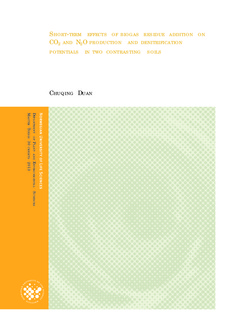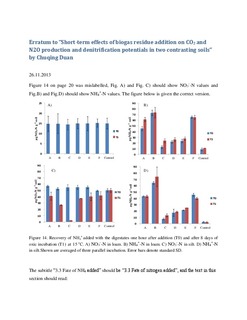| dc.description.abstract | Biogas residues (digestates) are liquid slurries typically rich in ammonium (NH4+) and phosphorous (P) which can be used as fertilisers, thus increasing the overall sustainability of biogas production. However, the addition of mineral N and P together with easily degradable organic carbon to soils may increase carbon dioxide (CO2) and nitrous oxide (N2O) emissions, which could compromise the overall goal of bioenergy production (CO2 saving). Whereas a number of studies have investigated longer term effects of residue application on plant growth, N- and P-status and greenhouse gas (GHG) emissions in cultivated soils, little is known about the immediate effects on C- and N-transformations when applying nutrient-rich slurries to bare soils. Laboratory incubation experiments was conducted with three Norwegian soils (sand, loam, silt) amended with biogas digestates from various mixtures of feedstocks (manures, wood, fish wastes, bagasse) to assess CO2 and N2O production potentials as affected by soil types and digestate quality. Soil type was found to strongly interact with digestate quality, resulting in soil-specific patterns of stimulation and repression in CO2 and N2O production across the different digestate qualities tested. This could be attributed to fundamentally different C- and N-turnover processes in the soils. The loam strongly suppressed indigenous respiration activity in the slurries and immobilised added NH4+ rapidly (presumably by fixation to clay minerals), resulting in little or no stimulation of CO2 production and an overall repression of N2O production as compared with a control only receiving water. In contrast, the silt responded with increased respiration activity, less NH4+ immobilisation (presumably dominated by microbial immobilisation), resulting in a clear stimulation of CO2 production and, in some cases, also N2O production. In a second experiment, the effect of biogas slurries on denitrification potentials and relative N2O production was tested. Residues stimulated denitrification in both soils but strongly decreased N2O/(N2O+N2) ratios in the silt. Together, our results suggest that soil-specific immobilisation and stabilisation processes have to be taken into account when extrapolating environmental effects of biogas residue application to soils. | no_NO |

